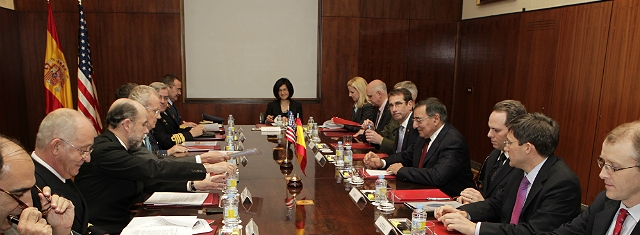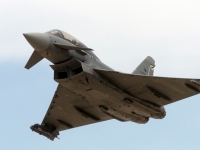Politics
Spain and USA negotiate the permanent use of the base of Moron by the USAF
A Pentagon request

Stock Image negotiations Spain-USA (Source: MoD)
The US military already use Spanish air base temporarily, following authorization received from the Spanish Government on April 19, 2013 for the deployment of an integrated 500 marines and eight aircraft for a year deterrent. Its main mission is to implement crisis response operations, contingencies limited scope and logistics operations to protect its facilities, personnel and citizens in northern and western Africa. On March 7, 2014, the Spanish government authorized the troop surge to 850 marines and 17 aircraft, for an extended period of one year. Was added to the duties of strength training and bilateral and multilateral exercises in Europe and Africa.
Now the Pentagon wants to deploy permanently in Spanish soil a military crisis response and to that end requested the Government of Spain modifying the existing treaty. The intention, said the vice president of the Spanish Government, Soraya Saenz de Santamaria, is "to strengthen the work of control, deterrence and immediate action, if necessary, in an area of absolute priority to the safety of our partners and neighbors, but also Spain, and fundamental to the maintenance of world peace and stability zone“.
Last year, the United States requested the temporary deployment at Air Base Moron de la Frontera continue for an indefinite term, the highest levels of strength and authorized aircraft will increase and broaden the missions and tasks to be performed by the force to ensure not only the protection of US citizens and facilities, but also those of Spain and those of other NATO members in Africa, Europe and Middle East, and to support joint training with the Spanish armed forces. The request for US to negotiate with the Departments of State and Defense United States an amendment to the Agreement on Defense Cooperation, whose use dates back to 1988. Negotiations will start immediately.
Liability for this article lies with the author, who also holds the copyright. Editorial content from USPA may be quoted on other websites as long as the quote comprises no more than 5% of the entire text, is marked as such and the source is named (via hyperlink).






